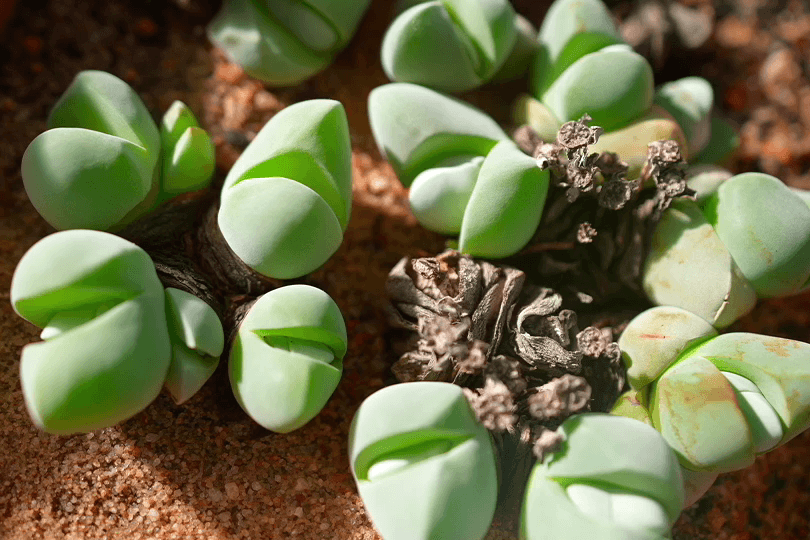The collecting of houseplants, specifically succulents, has increased dramatically over the past year. With lockdown leaving many housebound individuals yearning for the great outdoors, incorporating a variety of interesting houseplants has become a popular trend – especially online. With 3.6 billion views for #PlantTikTok on the popular video-sharing app TikTok, and 168 million posts containing #Succulent, small potted plants have become big business.
PLANTFUENCERS
With several plant lovers referring to themselves as “plantfluencers” on social media, conservationists are now ringing the alarm as some of these plantfluencers are buying up more rare and unique plants. This uptick in owning the rarest of plants has brought with it a much darker criminal element as plant poaching syndicates indiscriminately remove thousands of plants from the wild to resell online. Many of the more hard-to-find species also require specialised skills to keep alive – skills the average plantfluencer may not have.
A large chunk of illegally sourced plants comes from the biodiverse Richtersveld National Park in the most north-westerly corner of South Africa. Some of the plants endemic to this region can only be found on a single mountain slope or in the cracks and crevices of a far-flung valley. So, when these rare plants are ripped from the soil by poachers, the possibility of these plants becoming extinct increases dramatically.
WHEN DAMAGE IS DONE
Unfortunately, many plant owners aren’t even aware that they’re supporting the black market, while some may be all too aware. Sadly, once these plants are taken from the wild, it’s almost impossible to reintroduce them to their native soil, leaving overburdened botanical nurseries to keep these precious plants alive.
The most popular species to be poached in large scale is conophytum, with all listed sub-species currently on the South African National Biodiversity Institute (SANBI) red list classified as either Critically Endangered1, Vulnerable2, Endangered3 or Near Threatened4 .
- Critically Endangered: This is a highly range-restricted species, known for only appearing in a single location. Therefore, no loss of habitat should be permitted as it may lead to extinction of the species.
- Vulnerable: A species is vulnerable when the best available evidence indicates that it meets at least one of the five IUCN criteria for vulnerable, indicating that the species is facing a high risk of extinction.
- Endangered: A species is endangered when the best available evidence indicates that it meets at least one of the five IUCN criteria for endangered, indicating that the species is facing a very high risk of extinction.
- Near Threatened: A species is near threatened when available evidence indicates that it nearly meets any of the IUCN criteria for near threatened, and is therefore likely to become at risk of extinction in the near future.
WHAT YOU CAN DO
- Create awareness. Talk to other plant enthusiasts about the plant poaching industry and that illegal trade in rare and protected species exists.
- Research the plants you’re buying. You can check the SANBI Red List, International Union for Conservation of Nature (IUCN) Red List or CITES Appendix (see Appendices explained below) for more info on the status of the plant you’re looking to purchase.
- Know the source. Ask the seller/grower where the plant is originally from and how their distributor managed to source the plants.
- Get the paperwork. Permits and/or licences are needed when sourcing, propagating and selling rare plant species.
- Know what’s required. If you’re purchasing a plant that’s not indigenous to South Africa, you need to have a plant import permit and should be able to show this to authorities and buyers upon request.
- Ask the following questions about the plant before agreeing to buy it:
- Where was it sourced from?
- How was it sourced – was it propagated or taken from the wild?
- If sourced from the wild, does the seller have a permit issued by the Department of Forestry, Fisheries and the Environment.
- Shop with care. If someone is offering to sell you an extremely rare or unique succulent, be cautious. Many of the rare plants sold online and through online auctions could be illegally sourced.
If you suspect someone is sourcing or selling protected plant species, you can report the matter to the police. Alternatively, you can reach out to SANBI for further assistance.
FIND THE CITES APPENDICES HERE
The Appendices explained:
- Appendix I: Most endangered.
- Appendix II: Not yet endangered, but current trade practices pose a threat.
- Appendix III: Not threatened, but the trade of these species is closely monitored and permits are required in all instances.
Sources: CITES | SANBI | IUCN | Department of Forestry, Fisheries and the Environment

